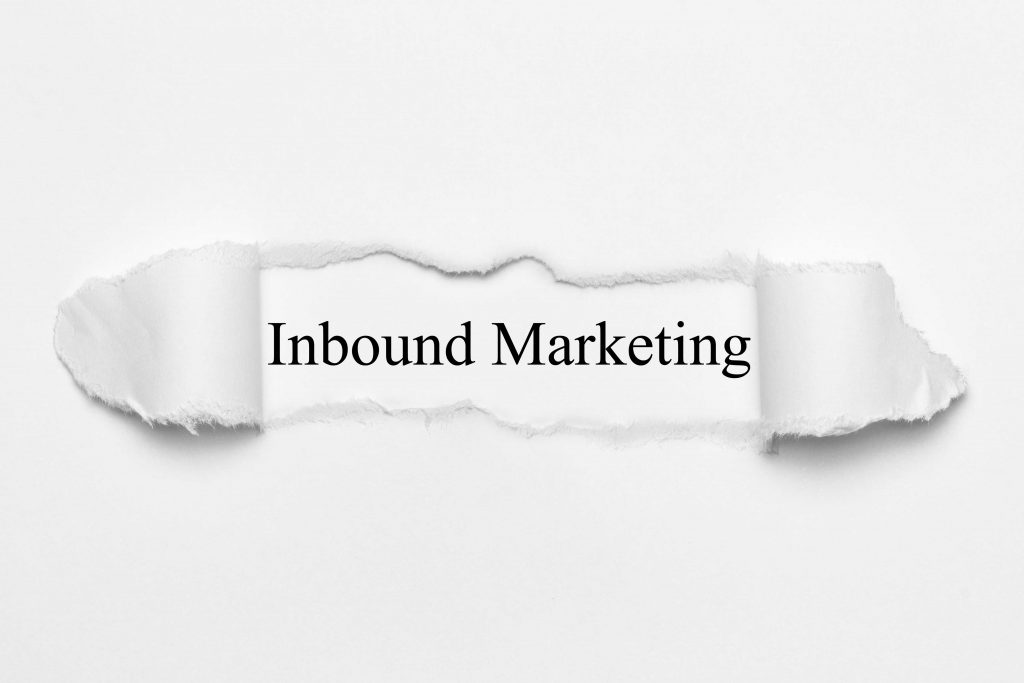Content focusing on customers needs
Inbound marketing delivers solutions through various content types on your different content platforms to meet the needs of potential buyers, wherever they are in the buying journey. It’s a strategy that draws in customers by providing them with the valuable content and experiences they seek, rather than interrupting them with unwanted messages.

This approach is built on strategies like creating user personas, optimizing for search engines, and nurturing leads to help prospects find your business organically. Key tactics include diverse pull marketing methods such as educational content, blogging, hosting events, improving SEO, engaging via social media, and publishing white papers.
Unlike outbound marketing, which pursues customers, inbound marketing emphasizes making your business easy to find and drawing customers in by creating and sharing content that builds awareness, strengthens relationships, and generates leads.
How does Inbound Marketing work?
Successful inbound marketing happens when you are producing high-quality content that your intended audience really engages with. Thus, inbound marketing succeeds by catering to customer needs and producing content that resonates with the target audience, fostering engagement and leading to buyer journeys and lasting relationships.
For example, when you create an eBook that your website visitors like, they will be more likely to submit their contact information and become leads.

The goal of inbound marketing is to increase brand awareness and engage a target audience, building interest in your brand and familiarizing them with your offerings while answering their questions.
However, the audience attracted through inbound marketing isn’t just made up of ideal leads; direct sales are not a guaranteed outcome. Rather, the strategy enhances your brand’s reputation and audience perception, aspects that can be more nuanced than direct sales.
Effective inbound content can address audience problems, boost website traffic, encourage word-of-mouth, and accumulate a pool of leads. When executed well, it leads to sales conversions and fosters ongoing customer relationships.
Who uses Inbound Marketing?
Inbound marketing benefits anyone looking to build stronger, more meaningful connections with customers. It’s ideal for addressing the frequent questions of your target audience through engaging content.
Implementing an inbound strategy requires maintaining a dynamic collection of educational and captivating content, feasible on any scale with sufficient commitment to time and resources.
This strategy is cost-effective and offers a significant return on investment by creating a dynamic repository of brand-related content. Small businesses, even on tight budgets, can leverage inbound marketing to make a substantial impact, providing solutions and answers to their key customer groups.
Why embrace Inbound Marketing?
In brief, taking on the work with inbound marketing makes your solutions known and it is empowering for your customers. Your potential customers are currently seeking solutions, inspiration, and products to enhance their businesses. They’re on the lookout for answers, and your inbound marketing content could be the exact resource they require.

This is the rationale behind adopting inbound marketing. Regardless of your business size, you can establish yourself as a thought leader in your industry. It gradually cultivates this image with your audience, offering a customer-focused approach for them to discover and engage with your brand.
Inbound Marketing strategies
Inbound marketing aims to expand your business by creating significant, enduring connections with prospects and customers. It prioritizes empowering individuals to achieve their objectives at all points of their journey with your organization.

The inbound marketing approach includes three key strategies:
- Attract
- Engage
- Delight
Attracting Strategies
To draw in potential customers, consistently produce content that addresses their needs, challenges, and desires. Effective attraction tactics involve content creation tailored to your audience’s interests, utilizing SEO to ensure content is discoverable.
Incorporate various content types, like how-to guides, testimonials, and optimized product descriptions, across your blog, social media, and email marketing. Regular publication schedules enhance visibility.
Engaging Strategies
Engage potential clients by discussing their challenges and presenting solutions.
Engagement means creating long-term relationships through value-driven conversations and customer-centric service. It emphasizes understanding customer needs over direct selling, with inbound sales and service teams focusing on empathetic interactions and solution selling instead of product selling.

Delighting strategies
Focus on customer retention and advocacy post-purchase by delivering content and support that ensures ongoing satisfaction. Post-sales strategies aim to maintain the customer relationship, offering assistance and advice whenever needed.
Tactics include tailored post-purchase content, responsive social media engagement, and incentives like discount codes to encourage brand loyalty and advocacy.
Effective inbound marketing is customer-centric at every stage, ensuring interactions are helpful and focused on building lasting relationships, ultimately turning satisfied customers into brand advocates.
Benefit of Inbound Marketing strategies
Inbound marketing is appealing because it doesn’t feel like a sales pitch. It educates and entertains, making it more effective than traditional marketing methods that interrupt rather than invite engagement. This approach leads to stronger impacts on consumers’ future decisions and feelings about your business by generating organic leads based on content value rather than budget.
Key benefits include empowering customers, boosting social media shares, enhancing brand awareness, improving SEO, and cost-effectively generating qualified leads.
Below follows nine arguments why executing inbound marketing is supporting your business.
Streamlines sales and marketing
Unites sales and marketing teams to produce impactful content that addresses customer needs throughout the buyer’s journey, leveraging sales insights for targeted content creation.

Boosts visibility and awareness
Enables even small brands to gain recognition online by producing content that meets the buyer’s journey, making your brand discoverable and establishing thought leadership.
Fits the digital age
Great content is shareable, increasing brand awareness digitally and making your company more recognizable.
Educates your audience
With most B2B buyers researching extensively before contact, targeted content placement helps educate and guide them toward your solutions.
Builds trust and credibility
Inbound marketing targets audiences effectively, enhancing trust and keeping your business top-of-mind for purchases by demonstrating industry leadership and respecting user privacy.

Generates quality traffic and leads
Active blogs and focused content attract quality traffic, leading to more qualified leads through proper engagement tactics, outperforming outbound methods.
Improves customer relationships
Offering valuable content deepens understanding of customer needs, fostering closer relationships and personalized engagement.

Delivers measurable ROI
Inbound marketing is cost-effective, yields a high ROI, boosts web traffic, and provides clear metrics for campaign success, making it easier to optimize marketing strategies.
Ensures sustainability
Online content remains indefinitely, offering lasting brand awareness and continuous engagement opportunities, with long-term benefits outweighing initial content development time. Inbound marketing’s sustainable, value-driven approach not only attracts but retains customers, setting the foundation for lasting relationships and measurable success.
Planning and executing Inbound Marketing
Effective content creation hinges on creativity and dedication over budget. Success comes from engaging both intellect and passion.
Follow the following five steps to begin. By adhering to these steps, you can build a strong inbound marketing strategy that attracts, engages, and delights customers, driving both brand loyalty and growth.
Define business objectives and buyer personas
Define who your customers are and thoroughly understand their needs and interests. Knowing your audience is essential before creating content that resonates.
Deliver content for every buying stage
Anticipate and answer your customers’ questions at each phase of their purchase journey. Use your content to attract and engage customers at all times, focusing on a narrative that’s both unique and engaging, ensuring you cover pre and post-purchase stages.
Select appropriate channels
The right platforms can make your content more effective. Choose the best channels to reach your audience, whether it’s social media, your website, or your blog.
Develop and implement a content schedule
Maintain a regular flow of fresh, relevant content to keep your audience engaged. A consistent content calendar helps address your audience’s concerns and establishes your brand as a reliable source of information.

Measure and refine your strategy
Use metrics such as SEO rankings, inbound links, and content output to evaluate your strategy’s performance. Regular analysis helps identify strengths and areas for improvement, ensuring your inbound marketing efforts remain effective.
Conclusion
Inbound marketing supports a company’s overall business by enhancing customer relationships, driving qualified lead generation, and ensuring long-term brand sustainability and growth. Its cost-effectiveness, coupled with the potential for significant ROI, makes it an indispensable part of modern marketing strategies.
The approach with Inbound Marketing emphasizes attracting potential buyers with valuable content and experiences they seek, rather than resorting to intrusive advertising. Inbound marketing fosters a customer-centric environment where businesses can build meaningful relationships with their audience at every stage of the buying journey, from awareness to decision-making and beyond.

It is important to focus on creating and distributing content that addresses the specific needs and interests of target audiences. Doing so, companies enhance their brand visibility and authority, making themselves easily discoverable to those seeking solutions.
This method not only improves SEO and generates higher quality traffic and leads but also significantly boosts brand awareness and establishes the company as a thought leader in its industry.



